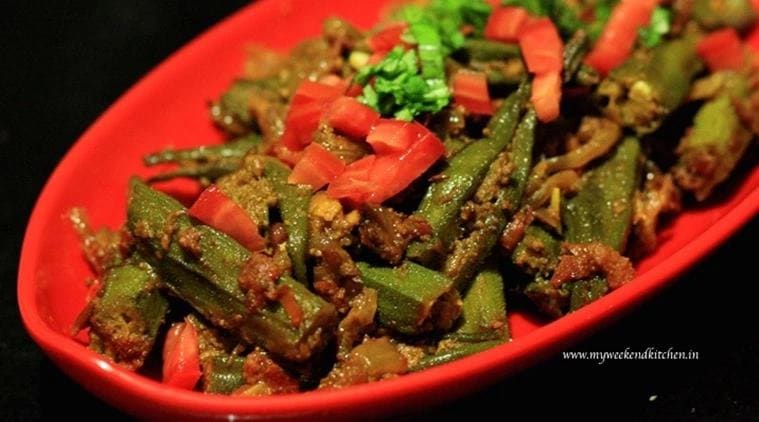Here’s how this veggie could help manage diabetes
From Indian Express
This veggie has been suggested to help manage blood sugar in cases of type 1, type 2, and gestational diabetes.

For all those suffering from diabetes and struggling to keep their sugar levels in check, okra or lady’s finger or bhindi could help. As a nutritious and healthy vegetable, okra is packed with fibre, both soluble and insoluble. As per the United States Department of Agriculture (USDA), a 100-gram of okra contains 33 calories, 7.45 grams of carbohydrates, 1.93 gram protein, 0.19 grams fat and 3.2 grams fibre. Since the fibre content takes time to break down within the body, it doesn’t let the blood sugar levels to spike.
It contains potassium, vitamin B, vitamin C, folic acid and calcium. A part of Indian kitchens for a long time now, okra has been a favorite of many. Both the peel and seeds of okra are known to lower the blood glucose levels, hence making it safe for consumption by diabetics. It is said that okra inhibits carb-breaking enzymes, increasing sensitivity to insulin and ensuring that there are sufficient insulin-producing cells in the pancreas.


In fact, as the glycaemic index of bhindi is in the low range that has a minimal effect on our blood glucose, according to the American Diabetes Association, non-starchy vegetables like bhindi can be freely enjoyed by diabetics and the ones who are watching their weight.
It has been suggested to help manage blood sugar in cases of type 1, type 2, and gestational diabetes.
In one study, published in 2011 in the Journal of Pharmacy & BioAllied Sciences, researchers in India found that diabetic mice fed dried and ground okra peels and seeds experienced a reduction in their blood glucose levels, while others showed a gradual decrease in blood glucose following regular feeding of okra extract for about ten days.
The impact of the tropical vegetable was also studied by a 2014 study, which was published in The Journal of Nutritional Biochemistry. The findings of the study indicated that okra may serve as a dietary therapy for hyperglycaemia and hypertriglyceridemia. “The effects of an ethanol extract of okra (EO) and its major flavonoids isoquercitrin and quercetin 3-O-gentiobioside on metabolic disorders in high-fat diet-induced obese mouse, the researchers found that treatment with EO, isoquercitrin and quercetin 3-O-gentiobioside reduced blood glucose and serum insulin levels and improved glucose tolerance in obese mice,” as per the study.
How to store bhindi?
When buying okra, make sure there are no hidden worms which are often not visible on first glance. Wash them well before cooking. Smaller pods are tender, easy to cook and taste much better as compared to the bigger ones. It is not advisable to store the vegetable for too long.
Here’s how to make a lip-smacking and healthy bhindi recipe.
Crispy Bhindi Salad by Yaman Agarwal


Ingredients:
For the crispy bhindi
25 – Bhindi/Okra
3tbsp – Amaranth flour
1 1/2tsp (or as per taste) – Rock salt
1tsp – Amchoor powder/Mango powder
1/4tsp – Black pepper
1 1/2 cup – Oil (to fry)
For the salad
1/3 cup – Tomato, deseeded and chopped
1/3 cup – Cucumber, chopped
1/3 cup – Sweet corn, boiled
2tbsp – Chopped coriander
1/2tsp – Lime juice
1 – Green chillies, chopped
1/2tsp – Rock salt
Method:
For the crispy bhindi
* Slice the bhindi using a mandolin/slider in an oblong fashion.
* In a mixing bowl, add in flour, salt, amchoor powder, black pepper and mix well.
* Add the bhindi to the flour mix and coat the bhindi well in the flour mix.
* Fry in medium-high flame until golden, take out on kitchen towels.
For the salad
* Mix all ingredients in a bowl.
* Add the crispy fried bhindi and serve!
For more on this story go to; https://indianexpress.com/article/lifestyle/health/favourite-vegetable-could-help-manage-diabetes-5997437/




